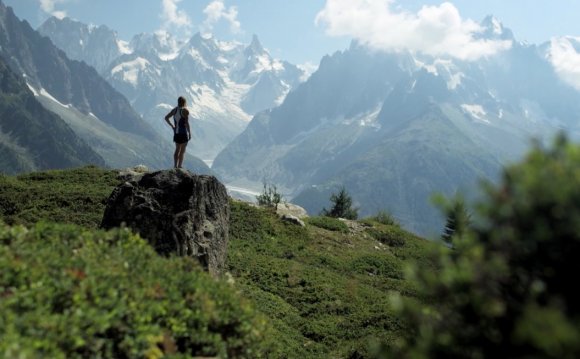

©Yves Breton
Cyclists on the gruelling ride
We gathered on the start line in the cold of an Alpine night. It was 4.45am, and the windows of the chalets around us in the village of Les Saisies remained shuttered, their balconies deserted. The hullabaloo of the Tour de France – sponsors’ floats, crowds of spectators, scores of support cars – seemed a world away.
Some 335 cyclists had come from around the world to take part but, as the marshals began to make announcements and a DJ cranked into life, they remained subdued, mostly silent, perhaps visualising the long journey ahead, perhaps trying to block it out.
The Tour du Mont Blanc is best known as a hiking route, a 10-day circumnavigation of western Europe’s highest peak, along footpaths that pass from France into Switzerland and Italy. It’s also famous among mountain bikers, who take five or six days to circle the mountain, on around 165km of off-road trails. Less well-known is a version for regular bikes that takes place every July. Sticking to roads means it travels further from the base of the mountain, pushing the route to 330km, and taking in seven major passes that together total 8, 000 metres of climbing. And it’s all done in a single day.
IN European destinations
At 5.30am we rolled out of Les Saisies, a pretty ski resort amid the high pastures of the Beaufortain region to the west of Mont Blanc. We headed north, clockwise around the peak, beginning with almost an hour of descent, the group stretching out into a line hundreds of metres long, a glowing snake of bike lights winding through the dark forests and around the hairpin bends. Somewhere near the ski resort of Megève, we got our first glimpse of Mont Blanc, its snowy flank shining in the morning light even as we pedalled through the darkness of the valley. There was something calm, hypnotic, about those early hours in the half-light until I stopped to adjust my shoe and saw the entire snake fly past, leaving me alone on the mountain and forced to spend the next half an hour frantically chasing to re-establish contact. Fail and I could be riding into the wind alone for 300km – 12 hours or more.
Such statistics put the Tour du Mont Blanc in a different league to the better-known “sportives”, or amateur cycling challenges. It is, for example, about double the length and ascent of a typical route for the most famous sportive, the Etape. “But that’s like going from London to Swansea without stopping!” a colleague had said when I asked him to join me. “I wouldn’t do that in a car.” I hadn’t pointed out that it was actually more like cycling to Swansea but climbing Mount Everest on the way.

At the bottom of the Chamonix valley, I caught the main group, and we pressed on in a long chain, passing through Chamonix itself then on towards the Col des Montets and the Swiss border, the bulk of the Mont Blanc massif looming over our right shoulders.
After the Col de la Forclaz came a glorious descent into Switzerland, a 45mph whoosh looking out over the flat-bottomed Rhône valley, hundreds of metres below. Then the long slog up to the 2, 469-metre-high Col du Grand Saint Bernard on the Italian border – where the Swiss dogs earned their reputation for saving travellers lost in winter snows.
Beyond the Italian city of Aosta, 180km in, the going got tough. The pack split into knots of three or four, and the temperature hit 35C. We toiled north up the Aosta valley on bigger roads, white concrete embankments blasting the sun back on us.
By Bourg-Saint-Maurice, back in France, I was alone, with just one climb to go – the Cormet de Roselend – before the final ascent to Les Saisies. It is a beautiful road, wild and isolated, but with about 2km to go to the pass, the clouds burst. Torrential rain was followed by hailstones that bounced knee-high off the road.
YOU MIGHT ALSO LIKE












